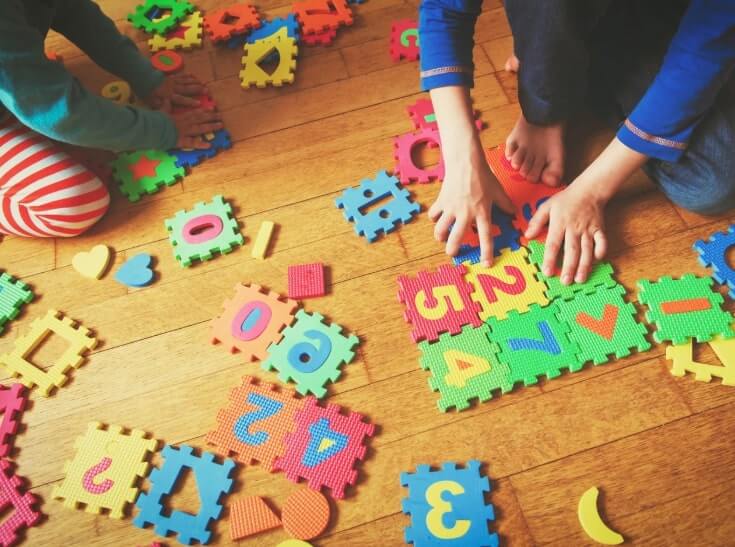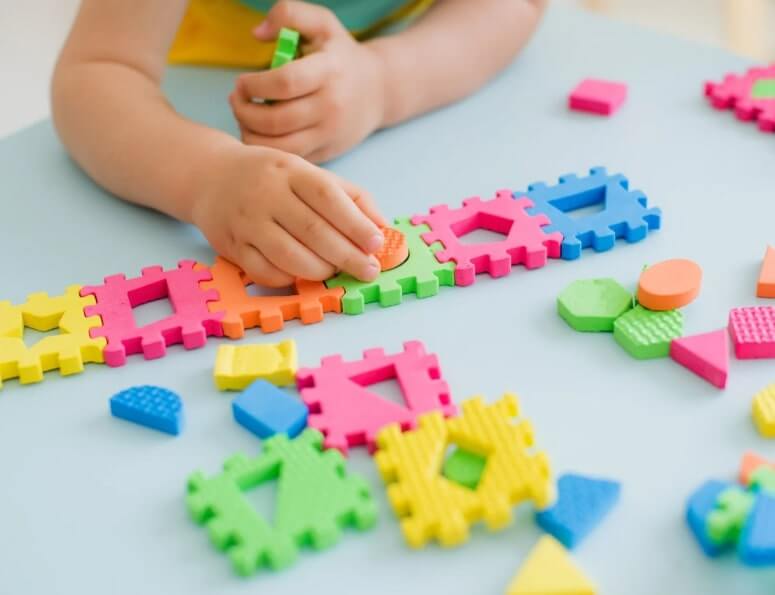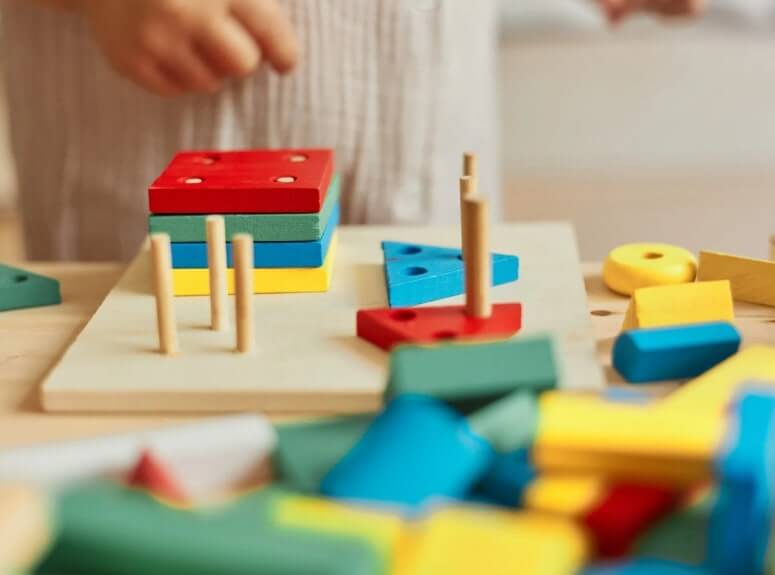
Quick Overview
The Early Years Foundation Stage (EYFS) is a set of rules in England that helps guide how children from birth to five years old learn and grow. It helps parents, teachers, and carers understand what children need to develop well. EYFS focuses on seven important areas of learning, split into basic skills and more specific skills. It uses play to make learning fun and helps get children ready for school. This guide will walk you through:
✅ EYFS includes 7 key learning areas: 3 basic ones (talking & listening, moving & physical skills, and social & emotional skills) and 4 specific ones (reading & writing, numbers, understanding the world, and creative arts)
✅ Playing is the main way children learn and grow in EYFS
✅ Teachers and carers watch children’s progress and talk with parents to see how they are doing
✅ EYFS helps children build confidence, communication, and the skills they need for school
✅ Giving children a caring and fun learning space helps them grow and learn at their own pace
Early childhood education lays the foundation for lifelong learning, and in the UK, the Early Years Foundation Stage (EYFS) framework plays a crucial role in shaping young learners. EYFS is a statutory framework that sets standards for the learning, development, and care of children from birth to five years old.
Understanding the EYFS Areas of Learning helps parents, educators, and caregivers support children’s development effectively. The framework is designed to ensure that every child receives a well-rounded education that nurtures their social, emotional, physical, and cognitive growth.
This guide explores the seven key areas of learning in the EYFS, their significance, and how they contribute to early childhood development.
What is the EYFS Framework?
The Early Years Foundation Stage (EYFS) is a set of guidelines and standards that govern how children are educated and cared for in early years settings such as nurseries, preschools, and reception classes in England.
Key Aims of EYFS:
✅ Promote holistic child development.
✅ Ensure a safe, engaging, and inclusive learning environment.
✅ Encourage play-based learning for skill development.
✅ Support school readiness and future learning success.
The framework outlines seven key areas of learning, divided into Prime Areas and Specific Areas to cover all aspects of early education.

The 7 EYFS Areas of Learning & Development
The EYFS framework is structured around three Prime Areas and four Specific Areas that support children’s learning journey.
🔹 Prime Areas of Learning (Foundation for Development)
These areas are essential for children’s early development, providing a strong foundation for further learning.
1️⃣ Communication and Language
⭐ What It Involves:
- Developing listening, attention, understanding, and speaking skills.
- Encouraging children to express themselves clearly.
- Engaging in storytelling, songs, and conversations.
💡 Activities to Support:
✔ Reading books and encouraging discussions.
✔ Singing nursery rhymes and storytelling.
✔ Using role-play activities to enhance vocabulary.
2️⃣ Physical Development
⭐ What It Involves:
- Developing fine and gross motor skills (e.g., running, jumping, writing).
- Encouraging hand-eye coordination through activities like drawing or playing with blocks.
- Promoting healthy eating, self-care, and personal hygiene.
💡 Activities to Support:
✔ Outdoor play (climbing, balancing, cycling).
✔ Finger painting and using playdough for fine motor skills.
✔ Teaching self-care habits like washing hands and dressing independently.

3️⃣ Personal, Social, and Emotional Development (PSED)
⭐ What It Involves:
- Building self-confidence and social skills.
- Teaching empathy, sharing, and teamwork.
- Encouraging emotional regulation and resilience.
💡 Activities to Support:
✔ Group activities that encourage sharing and turn-taking.
✔ Teaching children to express emotions through words.
✔ Encouraging problem-solving in social interactions.
🔹 Specific Areas of Learning (Building Knowledge & Skills)
These areas focus on developing knowledge and skills that support academic and creative learning.
4️⃣ Literacy
⭐ What It Involves:
- Learning phonics, letter recognition, and reading skills.
- Developing writing abilities through mark-making and storytelling.
- Encouraging a love for books and storytelling.
💡 Activities to Support:
✔ Reading aloud daily and discussing stories.
✔ Practicing writing letters and words using tracing sheets.
✔ Encouraging creative storytelling with picture books.
5️⃣ Mathematics
⭐ What It Involves:
- Learning numbers, counting, and basic operations (addition, subtraction).
- Understanding shapes, patterns, and measurements.
- Developing problem-solving and reasoning skills.
💡 Activities to Support:
✔ Counting objects in everyday activities.
✔ Sorting and matching games with shapes and colors.
✔ Exploring simple math concepts through songs and rhymes.
6️⃣ Understanding the World
⭐ What It Involves:
- Exploring the world around them (nature, cultures, technology).
- Learning about people, communities, and traditions.
- Developing curiosity about science and the environment.
💡 Activities to Support:
✔ Nature walks to explore plants, animals, and weather.
✔ Introducing simple science experiments.
✔ Encouraging discussions about different cultures and festivals.
7️⃣ Expressive Arts and Design
⭐ What It Involves:
- Encouraging creativity through art, music, dance, and imaginative play.
- Exploring different materials and artistic techniques.
- Developing confidence in self-expression.
💡 Activities to Support:
✔ Painting, drawing, and crafting with various materials.
✔ Playing musical instruments and dancing to different rhythms.
✔ Role-playing different scenarios (e.g., pretending to be a doctor, chef, or astronaut).

The Role of Play in EYFS Learning
Play-based learning is at the heart of EYFS because young children learn best through exploration and interaction.
Types of Play in EYFS:
🎭 Imaginative Play: Role-playing real-world experiences.
🧩 Constructive Play: Building structures with blocks or LEGO.
🎶 Sensory Play: Exploring textures, sounds, and materials.
🤝 Social Play: Learning teamwork and cooperation with peers.
Encouraging open-ended play helps children develop creativity, problem-solving skills, and confidence.
Assessing Children’s Progress in EYFS
Educators use ongoing observations and assessments to track children’s development and tailor learning experiences.
Key Assessment Methods:
📌 Baseline Assessments: Conducted at the start of early education to understand a child’s abilities.
📌 EYFS Profile (at age 5): Summarizes a child’s development in each learning area.
📌 Parental Feedback: Parents and caregivers contribute insights into their child’s progress.
Educators follow Development Matters guidance to assess whether children are meeting expected milestones.
Why EYFS Matters in Early Education
A strong foundation in EYFS areas of learning prepares children for primary school and beyond.
✅ Encourages holistic growth – Develops cognitive, emotional, and social skills.
✅ Improves language & communication – Essential for literacy and academic success.
✅ Builds self-confidence – Fosters independence and curiosity.
✅ Supports inclusivity – Adapts to different learning styles and needs.
By understanding EYFS, parents and educators can create nurturing environments that support children’s growth and lifelong learning.
Final Thoughts
The EYFS Areas of Learning provide a structured yet flexible approach to early childhood education. By focusing on communication, social-emotional growth, literacy, numeracy, and creativity, children develop essential skills that lay the groundwork for future success.
Key Takeaways:
✔ 3 Prime Areas: Communication & Language, Physical Development, Personal-Social Development.
✔ 4 Specific Areas: Literacy, Mathematics, Understanding the World, Expressive Arts & Design.
✔ Play-based learning is the foundation of EYFS education.
✔ Assessments and parental involvement help track progress effectively.
Providing a supportive, engaging, and stimulating learning environment ensures that every child thrives and develops to their full potential. 🌱📚
Are you ready to support early learning? Explore EYFS activities and create meaningful learning experiences today! 🚀
